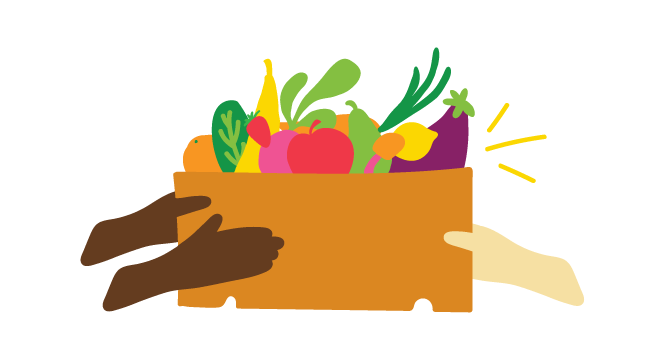Blog
Fighting Hunger and Food Insecurity
- November 15, 2022
- Posted by: Healthy Young NV
- Category: Teen Tween Young Adult

Understanding Food Insecurity
Food insecurity is the lack of consistent access to enough food to support an active and healthy life. Although hunger and food insecurity are often linked, it is important to note that they are distinctly different concepts. Hunger refers to physical sensations of discomfort, whereas food security refers to the lack of available financial resources required for food. Due to the pandemic and resulting economic crisis, many individuals in the United States are now experiencing a significant increase in both food insecurity and hunger.
Food Insecurity in Schools
Food insecurity is linked to negative health outcomes in both children and adults, and it may cause some children to have trouble in school. School children have been shown to score higher on assessments and retain information better when they have gotten enough to eat. Students struggle to focus and pay attention when they are hungry or worried about where their next meal is coming from. Nutritional assistance programs can provide help to people in need. The National School Lunch Program offers low-cost or free lunches to eligible students every day. For many students, the only complete meal they will eat in a day is provided at school. Free or reduced school meals can offer children a nourishing meal, ensuring they are getting adequate nutrition to keep them healthy. The Special Milk Program is a program that provides milk to school aged who do not participate in other federal meal service programs. Students can receive pints of milk each day, and the program reimbursed the schools for the milk they serve. Some students who are in pre-kindergarten or kindergarten do not have access to the traditional school lunch programs but are still eligible to receive milk from the SMP.
Factors Related to Food Insecurity
There are many related risk factors that magnify the effects of food insecurity for low-income families. Some of these overlapping factors include unemployment, economic disadvantage, and lack of affordable housing. Giving more people benefits through nutrition assistance programs, increasing benefit amounts, and addressing unemployment may help reduce food insecurity and hunger. Adults who are food insecure may be at an increased risk for a variety of negative health outcomes and health disparities. Residents are at risk for food insecurity in neighborhoods where transportation is difficult and options are limited, the travel distance to stores is greater, and there are fewer supermarkets.
Nutritional Assistance Programs
Food assistance programs, such as the National School Lunch Program (NSLP); the Women, Infants, and Children (WIC) program; and the Supplemental Nutrition Assistance Program (SNAP), address barriers to accessing healthy food. These programs aim to fight food insecurity, especially among young children.
NSLP – federally assisted meal program operating in public and nonprofit private schools and residential childcare institutions; provides nutritionally balanced, low-cost, or free lunches to children each school day
WIC– provides federal grants to states for supplemental foods, health care referrals, and nutrition education for low-income pregnant, breastfeeding, and non-breastfeeding postpartum women, and to infants and children up to age 5 who are found to be at nutritional risk
SNAP – provides nutrition benefits to supplement the food budget of needy families so they can purchase healthy food and move towards self-sufficiency; qualifying families receive funds to purchase eligible food in authorized foods stores
Some people don’t have the information they need to choose healthy foods, while others don’t have access to healthy foods or can’t afford to buy enough food. Public health interventions that focus on helping everyone access healthy foods are key to reducing food insecurity and hunger, as well as improving health. People who eat a large amount of unhealthy foods, like foods high in saturated fat and added sugars, are at increased risk for obesity, heart disease, type 2 diabetes, and other health problems. Strategies and interventions to help people choose healthy foods can help reduce their risk of chronic diseases and improve their overall health.
For more information about the communities affected by food insecurity, Feeding America’s Map the Meal Gap study shows data about specific demographics with food insecurity in the United States.
This post was written by Catherine, an intern at Immunize Nevada.
Resources:
https://map.feedingamerica.org/
https://www.ers.usda.gov/webdoc/publications/94849/err-270.pdf?v=963.1
https://www.healthypeople.gov/2020/topics-objectives/topic/social-determinants-of-health


